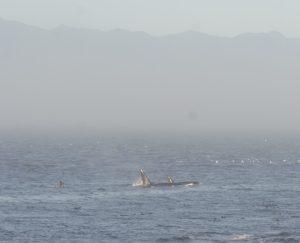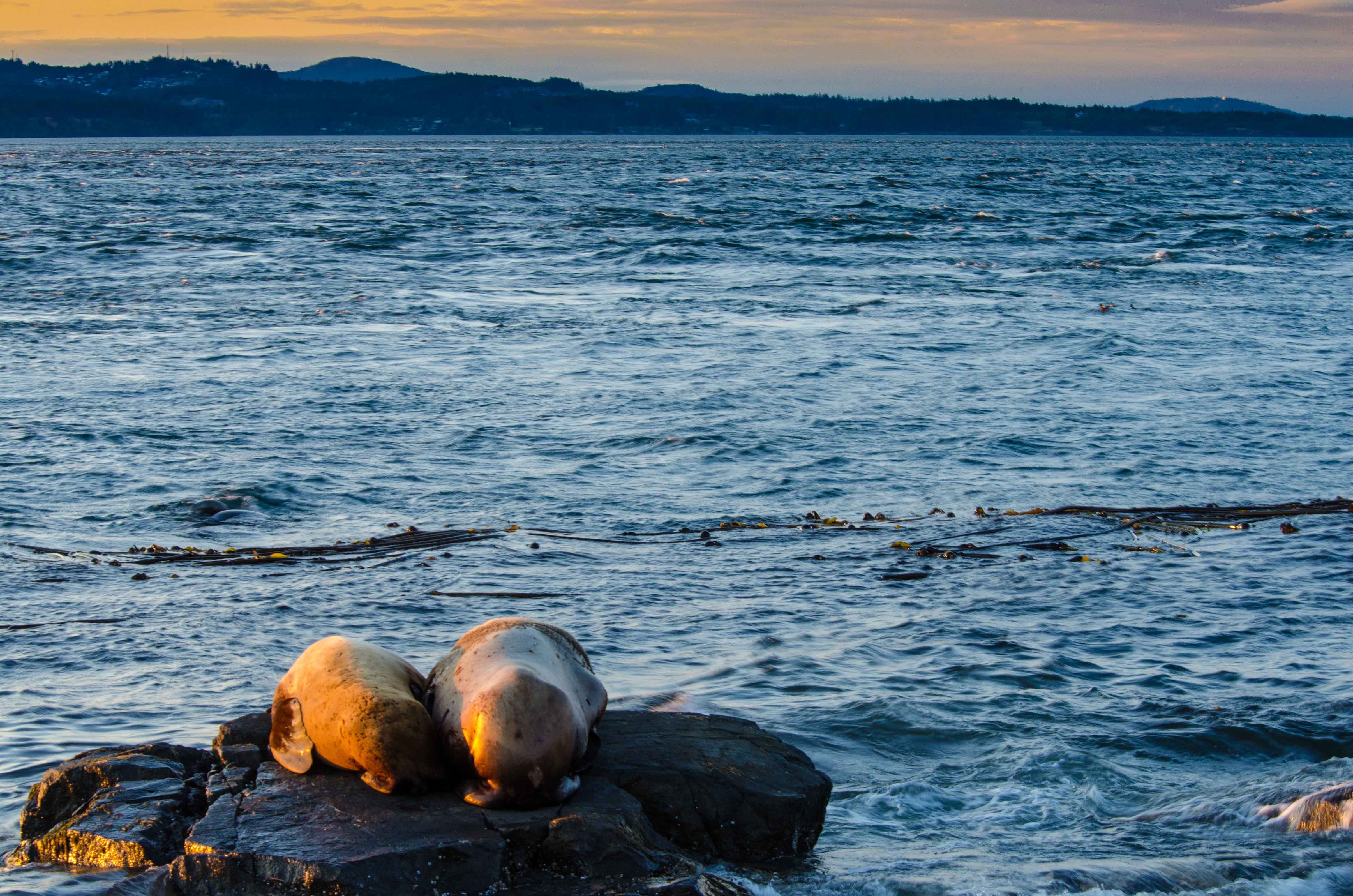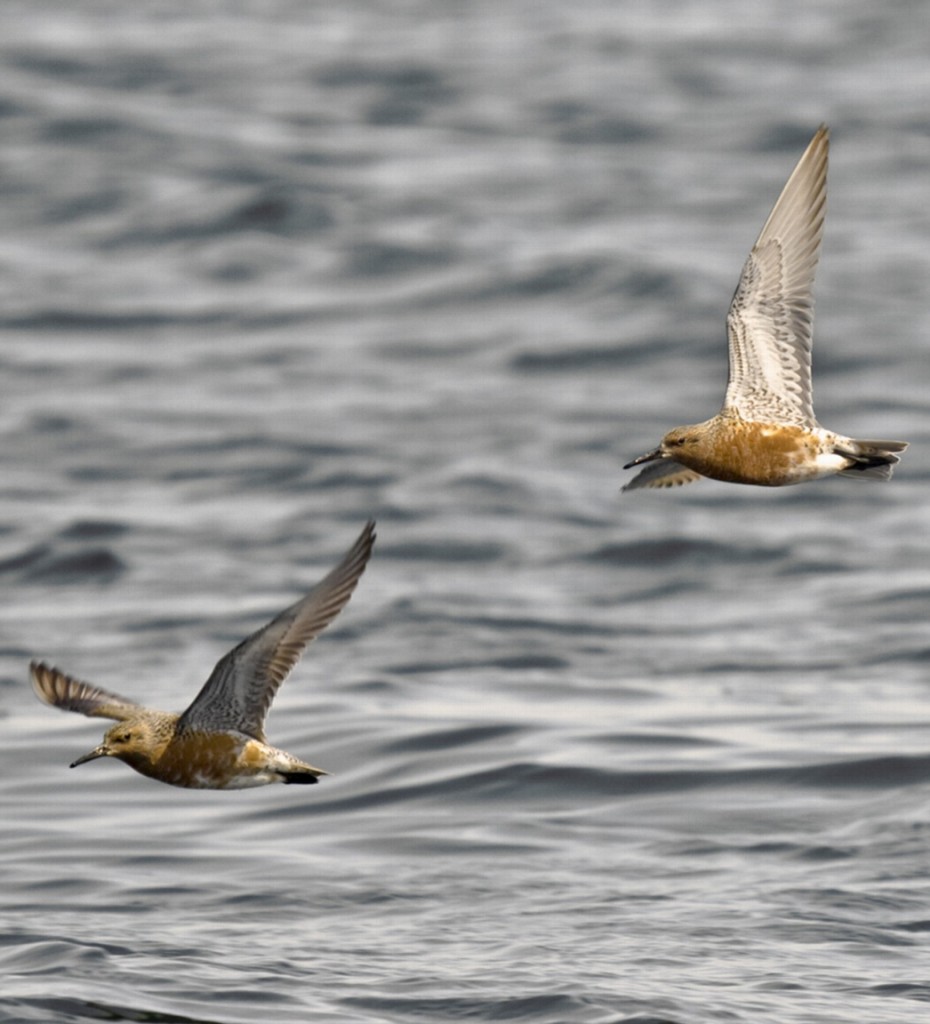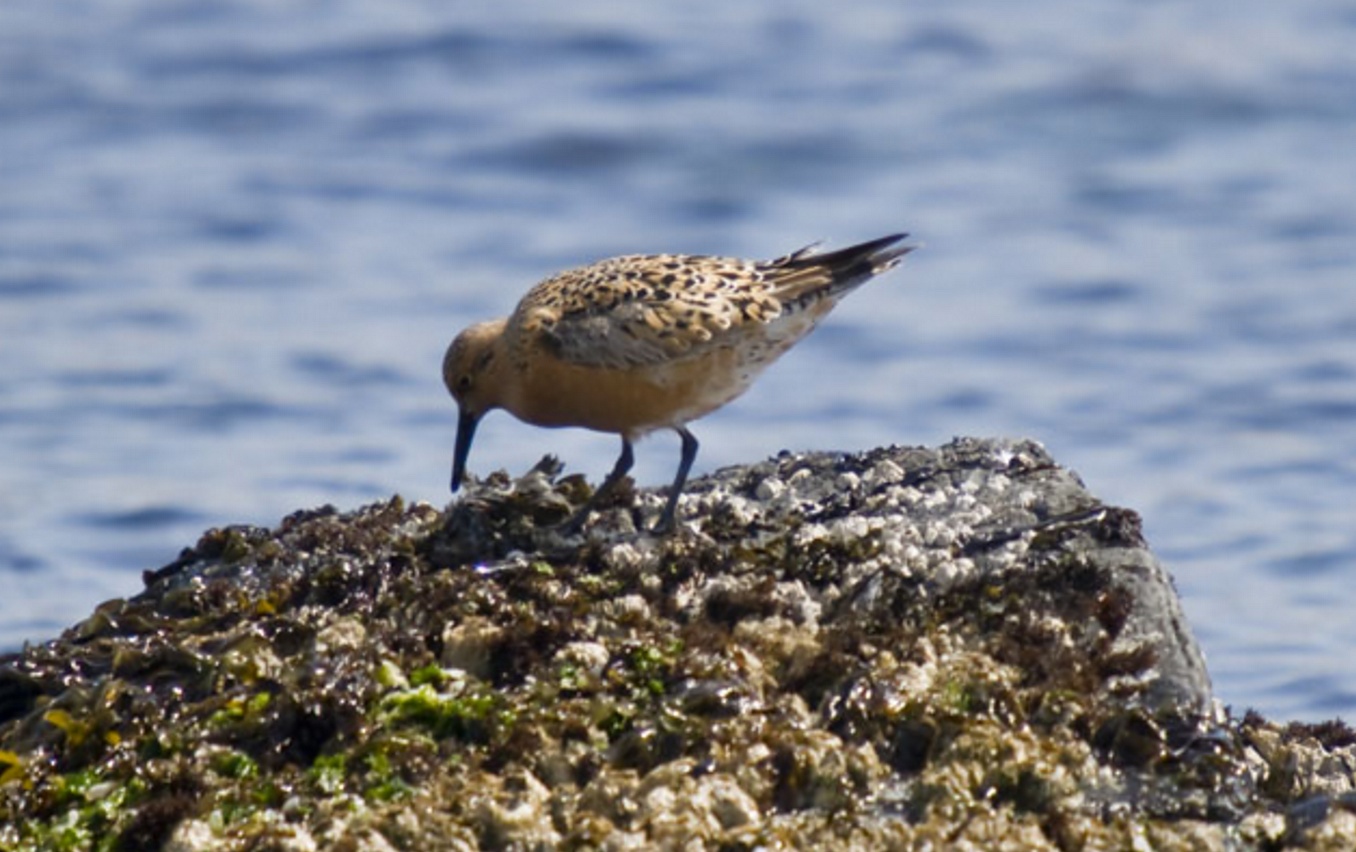Weather: west wind 15 knots, fog cleared by 8 a.m. visibility good
Tide .8 m at 12 noon
Elephant Seal 1 male, 1 female
Orcas 4
Seals 68 (13 pups?) on south and south seal rocks
Sea Lions both Stellar and California 60 on middle and west rocks
Gulls
While I was counting these gulls there were 2 “feeding flocks” just off the island with about 1000 gulls so there may have been fewer gulls on the islands than usual
660 on rocks below generator shed western and glaucous winged gulllls
110 on island “nesting” mostly glaucous winged gulls but several western/hybrid gullls nesting as well
estimate of between 80 and 150 chicks
Cormorants 14
Pigeon Guillemots 56
Surfbirds 8
Black turnstones 58
Black Oystercatcher 18? they are hard to count as they move around so much 1 new chick!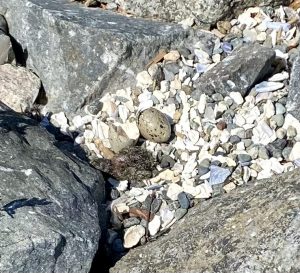
Bald Eagle 1
Western sand piper 4
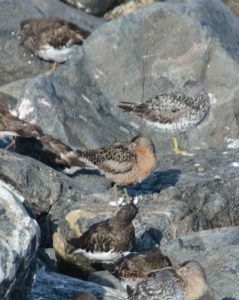
can you identify this bird? red knot ?
